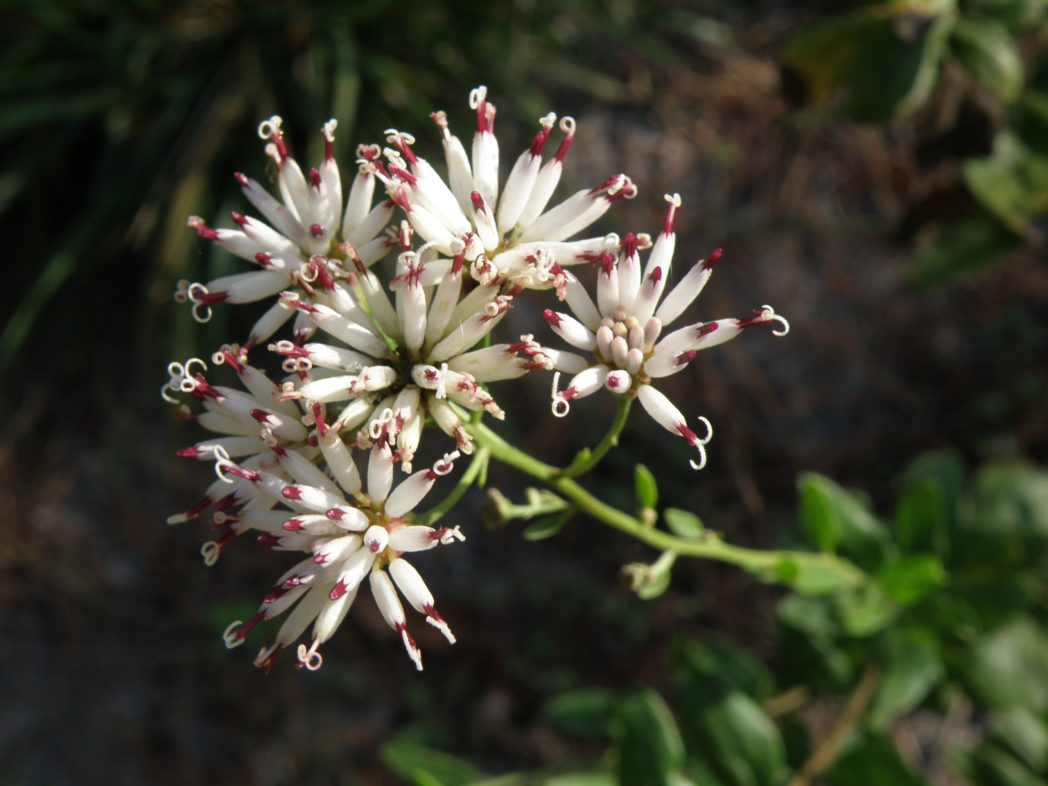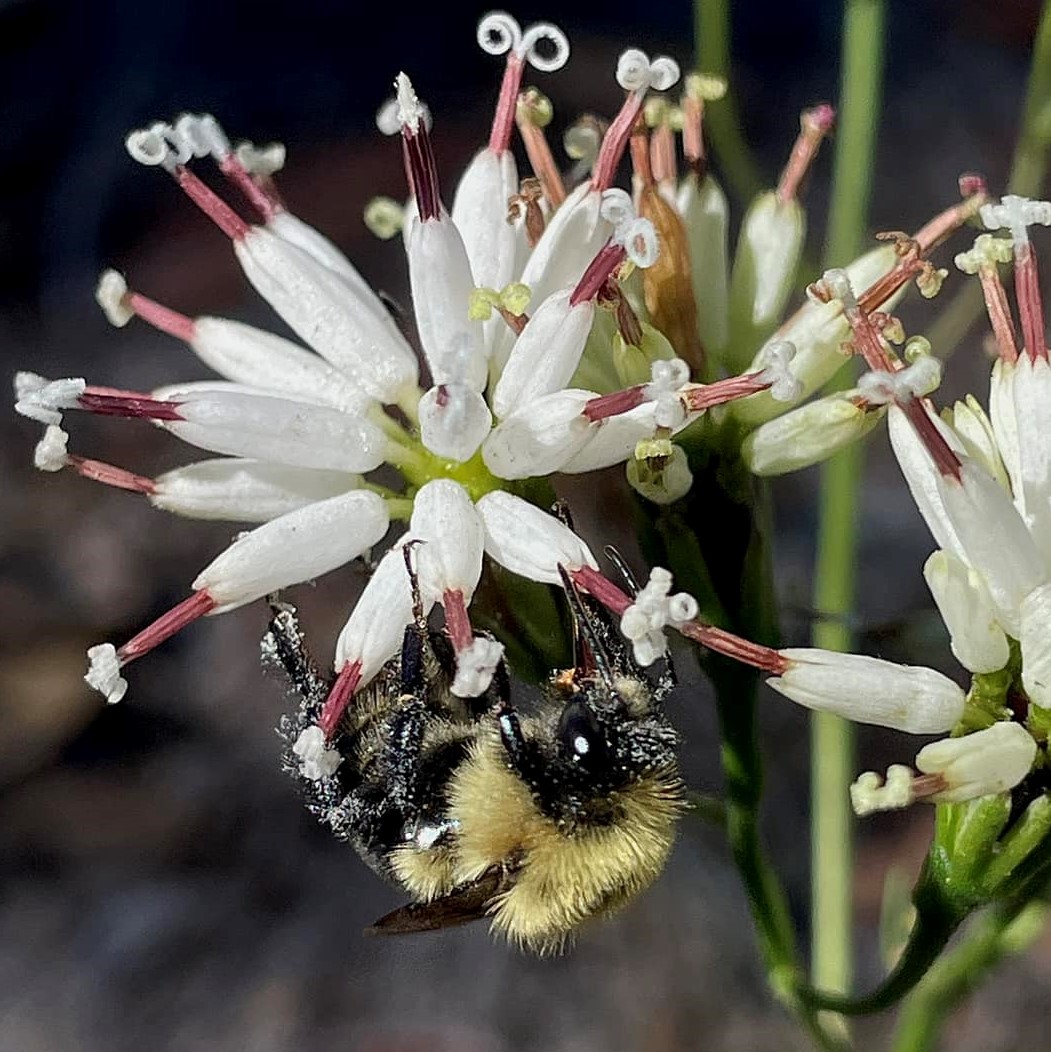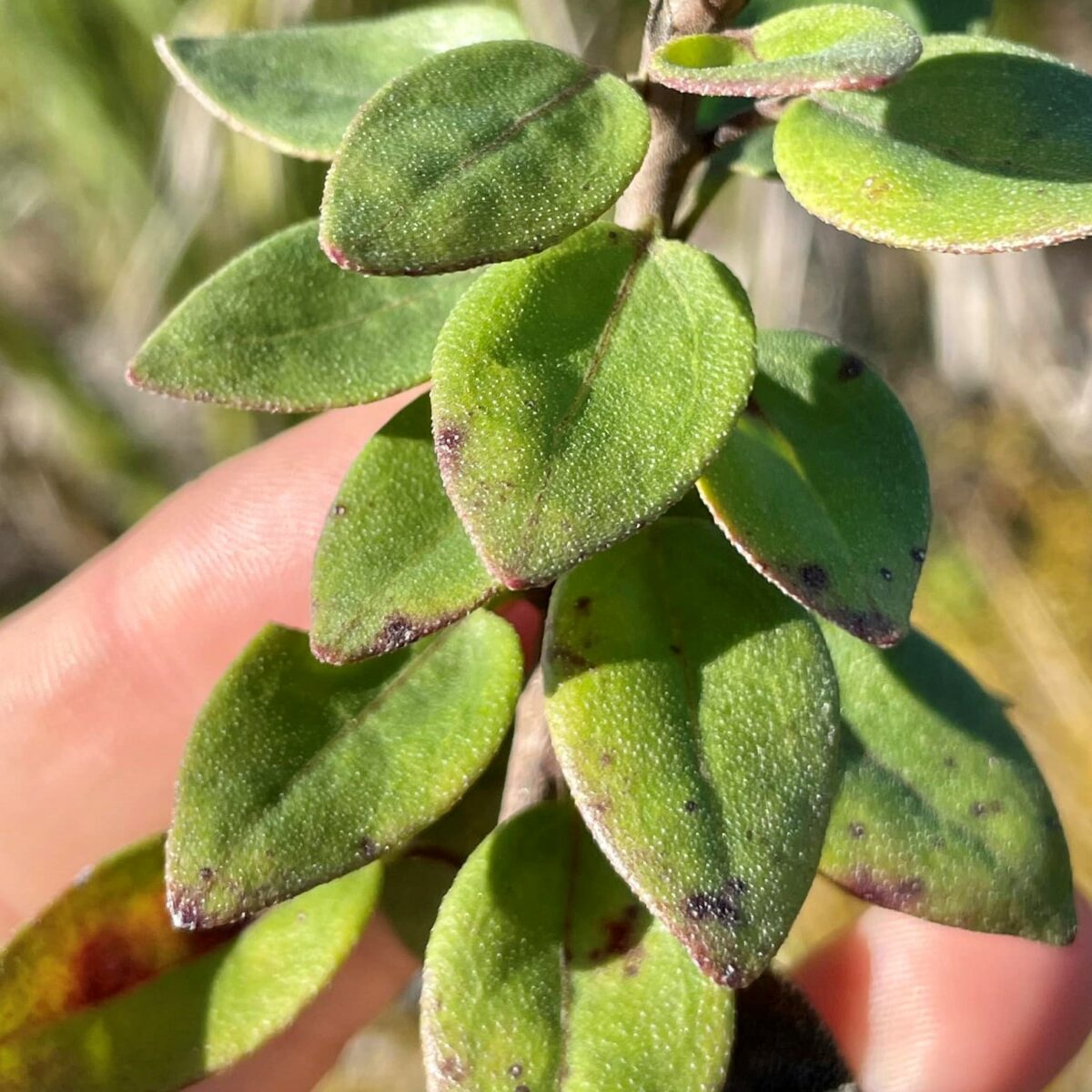Feay’s palafox
Pictured above: Feay’s palafoxia (Palafoxia feayi) by Stacey Matrazzo. Click on terms for botanical definitions. View post as a PDF.
Feay’s palafox (Palafoxia feayi) is a very unique wildflower, endemic only to Florida’s central and southern peninsula. It occurs naturally in sandhills, scrubby flatwoods, and scrub. It’s fall blooms are an important food source for a variety of butterflies and bees. Research from the Archbold Biological Station documented numerous bee and wasp species visiting the flowers including bumble bees, sweat bees, leafcutting bees, spider wasps, vespid wasps and more.
Although it is a member of the Aster family, it bears few visual similarities. It is more woody than herbaceous; its blooms are without the petal-like ray florets; and its disk florets are tubular. They are white to pinkish in color. Most noticeable are the dark purple- to maroon-colored stigmas and the curved, white styles that extend from the ends of each disk floret. At the base of each flower are bracts that vary in color from green to purple. Leaves are oppositely arranged, oval-shaped toward the base, and get smaller and more linear toward the top of the plant. The leaf surface is rough to the touch.
Family: Asteraceae (Aster, daisy or composite family)
Native range: Central and South Florida
To see where natural populations of Feay’s palafox have been vouchered, visit florida.plantatlas.usf.edu.
Lifespan: Perennial
Soil: Well-drained, sandy soils
Exposure: Full sun to minimal shade
Growth habit: 4–6’+
Propagation: Seed
Florida regions of landscape suitability: Central, South
Garden tips: The tendency of Feay’s palafox to grow tall and lanky makes it best suited for larger plantings of wildflowers and grasses.
Feay’s palafox is sometimes available at nurseries that specialize in native plants. Visit PlantRealFlorida.org to find a native nursery in your area.
Learn more about Feay’s palafox from the Florida Native Plant Society and the Institute for Regional Conservation.



